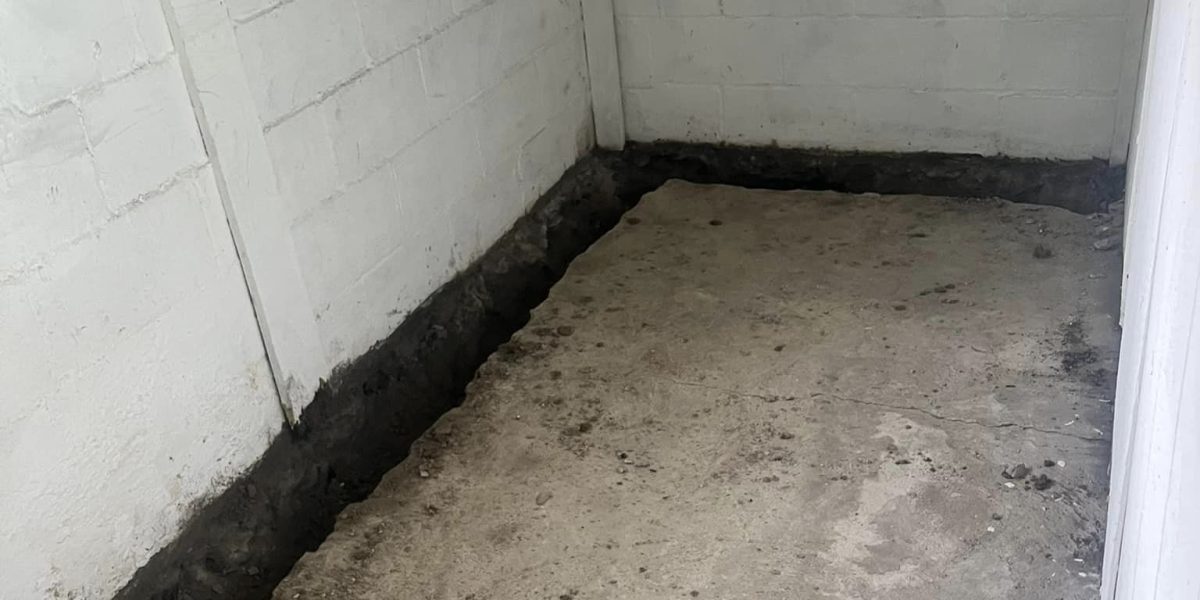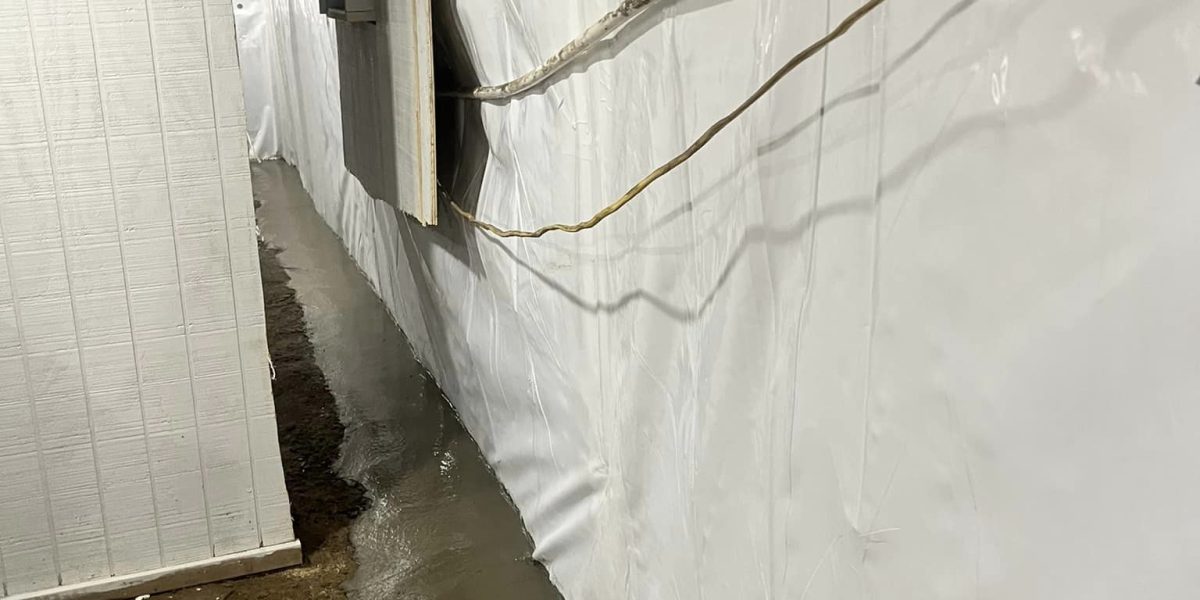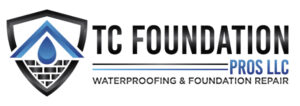Understanding the differences between exterior and interior waterproofing methods is essential in determining the most effective solution for your home. Before making a decision, consider factors like cost, long-term benefits, and maintenance requirements to guarantee your basement stays dry and protected. By the end of this discussion, you’ll have a clearer understanding of which waterproofing method suits your needs best.

Key Takeaways
- Consider exterior waterproofing for comprehensive protection against water intrusion.
- Choose interior waterproofing for cost-efficiency and less disruption during installation.
- Evaluate the severity of water issues, budget, and basement layout to decide.
- Exterior methods prevent water from entering, while interior solutions manage water inside.
- Long-term benefits and maintenance requirements differ between exterior and interior waterproofing.
Key Differences
Exterior and interior basement waterproofing methods differ greatly regarding where the waterproofing barriers are applied within the structure. When considering interior basement waterproofing, the main difference lies in the placement of the waterproofing system. Interior waterproofing involves managing water intrusion from inside the basement walls, typically by installing a drainage system and sump pump.
One of the primary advantages of interior basement waterproofing is its cost-effectiveness. It’s generally less expensive to implement compared to exterior methods since it doesn’t require extensive excavation work. Additionally, interior waterproofing can be completed quickly, minimizing disturbance to your home life. On the flip side, a potential drawback of interior waterproofing is that it doesn’t address the root cause of the water issue. While it effectively manages water once it enters the basement, exterior methods are often more effective at preventing water from entering in the first place.
Best practices for interior basement waterproofing include ensuring proper installation of the drainage system and sump pump to effectively manage water. It’s crucial to regularly maintain and test these systems to make sure they’re functioning at their best. Additionally, addressing any existing cracks or leaks in the basement walls is vital to prevent water seepage.
Exterior Waterproofing Methods
When considering waterproofing methods for your basement, it’s essential to explore the techniques and advantages of applying waterproof barriers on the outer surfaces of your foundation walls. Exterior waterproofing methods involve creating a protective layer on the outside of your basement walls to prevent water infiltration.
One of the primary components of exterior waterproofing is the installation of drainage systems. These systems help manage water by directing it away from your foundation. French drains, for example, are commonly used in exterior waterproofing. These drains consist of a perforated pipe surrounded by gravel, which helps to collect and redirect water away from the foundation walls.
The exterior waterproofing process typically starts with an excavation around the foundation of your home. This excavation process allows workers to access the exterior walls of the basement, apply the waterproofing membrane, and install the necessary drainage systems.
While this method can be more labor-intensive and costly compared to interior waterproofing, it provides a more all-encompassing solution by addressing water issues before they enter your basement.
Interior Waterproofing Methods
Interior waterproofing methods involve implementing measures inside your basement to prevent water intrusion and moisture issues. When it comes to keeping your basement dry, there are several effective techniques you can use:
- Drainage Systems: Installing interior drainage systems such as French drains or interior drain tile systems can help to redirect water away from your basement walls and foundation, preventing water from seeping in.
- Vapor Barriers: Vapor barriers are materials used to prevent moisture from seeping through the walls and floors of your basement. By installing vapor barriers, you can reduce the risk of mold growth and water damage.
- Sump Pumps: Sump pumps are essential for removing water that accumulates in a sump basin. They automatically pump out excess water, keeping your basement dry and free from flooding.
- Epoxy Injections: Epoxy injections are used to repair cracks in your basement walls that may be allowing water to seep through. By filling these cracks with epoxy, you can effectively seal them off and prevent further water intrusion.
Cost Comparison
To contrast the expenses of interior basement waterproofing methods, it’s important to assess various factors that contribute to the overall cost of these solutions.
Interior waterproofing methods generally offer cost savings compared to exterior solutions due to the reduced labor and materials needed. When budget planning for waterproofing your basement, taking into account the upfront costs along with long-term savings is crucial.
Interior basement waterproofing methods such as interior sealants, interior drainage systems, and sump pumps are typically more economical than exterior excavations. The materials used for interior solutions are often more affordable, and the labor involved is usually simpler and quicker, leading to lower overall expenses.
Additionally, interior waterproofing methods can be installed without the need for heavy equipment or extensive landscaping, further contributing to cost savings.
When comparing the expenses of interior waterproofing options, it’s vital to consider the size of your basement, the seriousness of the water issue, and the specific method chosen. While interior waterproofing may offer initial cost savings, it’s important to make sure that the method selected effectively addresses the water intrusion problem to avoid additional expenses in the future.
Effectiveness Evaluation
Evaluating the effectiveness of basement waterproofing methods involves examining their ability to prevent water intrusion and safeguard the interior space from moisture damage. When comparing the effectiveness of exterior and interior basement waterproofing, there are some key factors to take into account:
- Waterproofing Depth: Exterior waterproofing creates a barrier outside the foundation walls, preventing water from seeping into the basement. Interior waterproofing, on the other hand, manages water that has already entered the basement.
- Cost-Effectiveness: While exterior waterproofing may be more expensive upfront due to excavation costs, it can provide long-term protection, potentially making it a more cost-efficient solution in the long run.
- Maintenance Requirements: Exterior waterproofing typically requires less maintenance once installed, whereas interior systems may need periodic checks and upkeep.
- Common Misconceptions: One common misconception is that interior waterproofing is less effective than exterior methods. However, interior solutions can effectively manage water already inside the basement and prevent future issues.
When evaluating the effectiveness of basement waterproofing methods, it’s crucial to take into account the specific needs of your home, the severity of water intrusion, and your long-term goals for protecting your basement. By understanding the differences between exterior and interior waterproofing, you can make an informed decision to ensure your basement remains dry and free of moisture damage.
Long-Term Benefits
Consider the durability advantages and lasting benefits of both exterior and interior basement waterproofing methods to evaluate their long-term advantages.
Exterior waterproofing provides exceptional investment protection by safeguarding your property against water intrusion effectively. By applying waterproof membranes, drainage systems, and sealants on the outer walls, exterior waterproofing secures the structural integrity of your basement over time. This method not only prevents water damage but also enhances the overall property value by maintaining a dry and secure basement environment.
On the other hand, interior basement waterproofing focuses on managing water that has already penetrated the basement walls. While it may seem like a short-term solution, interior waterproofing also offers long-term advantages. By installing interior drainage systems, sump pumps, and vapor barriers this method helps in preventing future water damage, thereby safeguarding the structural integrity of your property in the long run.
Additionally, maintaining a dry basement through interior waterproofing can greatly increase property value by ensuring a healthier living environment and preserving the house’s overall condition.

Maintenance Requirements
Maintenance for both exterior and interior basement waterproofing methods involves regular inspections and upkeep to ensure the continued effectiveness of the system.
- Maintenance Schedule: Create a maintenance schedule to check for any signs of water intrusion, cracks, or leaks in the basement walls or floors. Regular inspections can help identify issues early on, preventing costly repairs down the line.
- Waterproofing Products: Check the condition of the waterproofing products used in either method. Over time, these products may degrade, lose their effectiveness, or require reapplication. Make sure to follow manufacturer guidelines for maintenance and reapplication.
- Drainage System: Inspect the drainage system, whether it be exterior French drains or interior drain tiles. Confirm that they’re clear of debris and functioning correctly to divert water away from the foundation. Clogged or damaged drainage systems can lead to water pooling around the basement, increasing the risk of leaks.
- Humidity Control: Monitor the humidity levels in the basement to prevent moisture buildup. Dehumidifiers or ventilation systems should be used to maintain the best humidity levels. High humidity can contribute to mold growth and compromise the waterproofing system’s efficiency.
Professional Vs. DIY
Engaging professional services for basement waterproofing installation is often recommended for complex projects requiring specialized equipment and expertise. While DIY waterproofing kits are available, they may not always provide a long-term solution. Professionals have the advantage of experience, training, and access to high-quality materials, ensuring a more effective waterproofing system for your basement.
Pros of Hiring Professionals:
- Expert Advice: Professionals can assess your basement’s specific needs and recommend the most suitable waterproofing solution.
- Quality Workmanship: Professional waterproofing companies have the skills and tools to complete the job efficiently and effectively.
- Long-Term Solutions: Professionals can offer warranties on their work, providing you with peace of mind regarding the durability of the waterproofing system.
Cons of Hiring Professionals:
- Cost: Professional services can be more expensive upfront compared to a DIY approach.
- Dependency: Relying on professionals means you won’t have direct control over the installation process.
While DIY waterproofing may seem cost-effective, it often lacks the thoroughness and expertise that professionals bring. Consider the pros and cons carefully before deciding on the best approach for waterproofing your basement.
Choosing the Right Solution
To determine the most suitable waterproofing solution for your basement, evaluate the specific requirements of your space and consider the long-term effectiveness of the chosen method.
When choosing between exterior and interior basement waterproofing, it’s crucial to weigh the pros and cons of each option based on your unique situation. Here are some decision factors to help you make the right choice:
- Exterior Waterproofing:
- Pros: Provides extensive protection by preventing water from entering the foundation walls.
- Cons: Requires excavation around the foundation, which can be costly and cause disturbance.
- Interior Waterproofing:
- Pros: It can be more cost-efficient and less intrusive compared to exterior solutions.
- Cons: It may not tackle the root cause of the water intrusion, leading to potential long-term issues.
Consider factors such as the severity of water infiltration, your budget, and the layout of your basement when making your decision.
If you have frequent water leaks or live in an area with high water tables, exterior waterproofing might be the most effective choice. On the other hand, if your basement experiences minor leaks and you’re looking for a more budget-friendly option, interior waterproofing could be the way to go.
Make an informed decision based on your specific needs to guarantee a dry and secure basement for years to come.
When assessing the choices of exterior versus interior basement waterproofing, take into account the level of protection needed and financial limitations. Keep in mind, ‘you can’t judge a book by its cover’ – the most economical option may not always offer the most thorough protection.
Assess the seriousness of water seepage, long-term advantages, upkeep requirements, and whether to enlist experts or DIY. Choose wisely to guarantee a dry and safe basement for years ahead.
